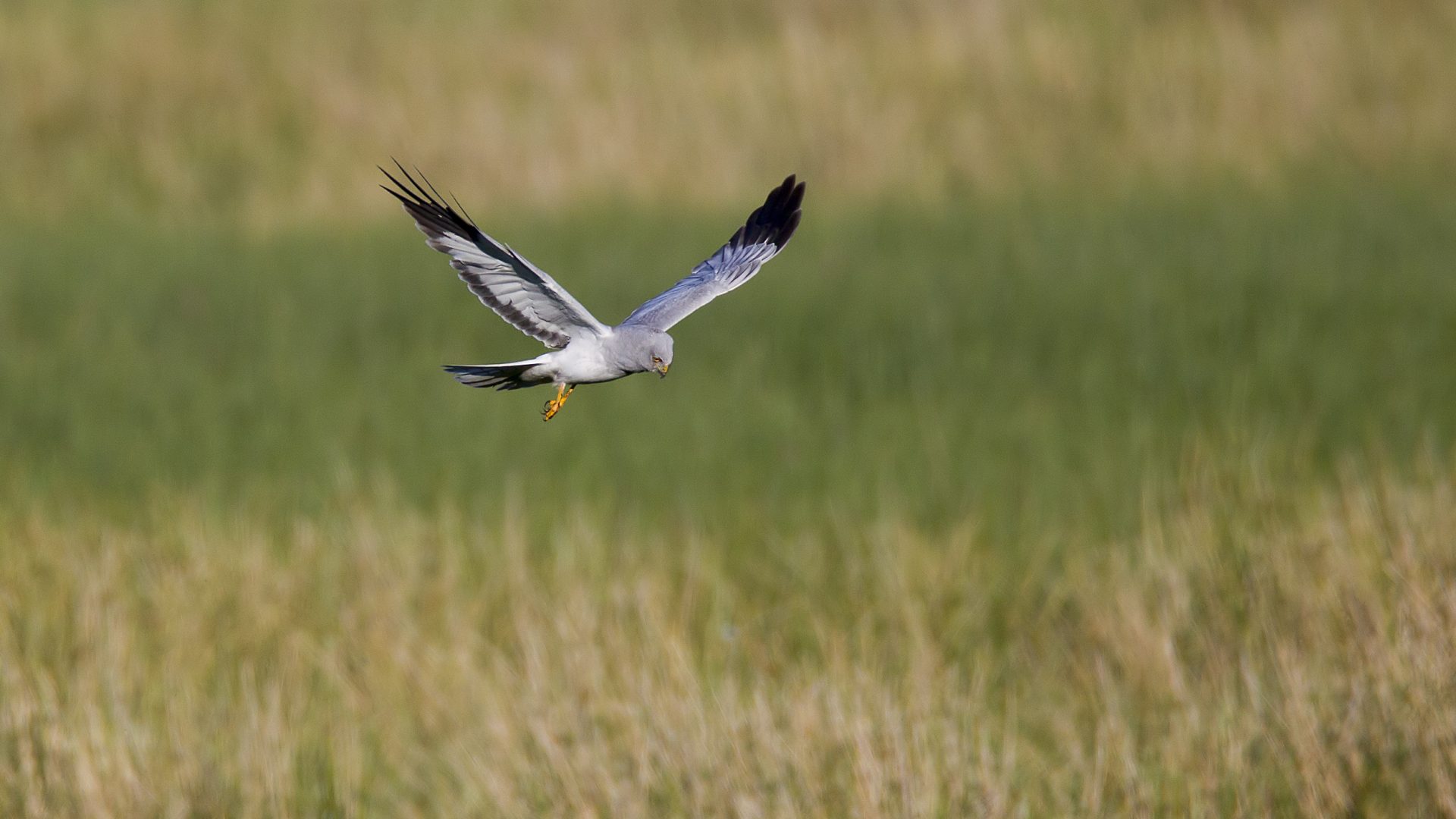
Birds of Prey in the Yorkshire Dales National Park
Published: 13 August 2018
The uplands of the Yorkshire Dales National Park (YDNP) should support healthy numbers of birds of prey but, like many areas of northern England, the populations of some of these species are well below any natural carrying capacity. Most people will be aware of the problems faced by birds of prey in some areas where heather moorland is intensively managed for grouse shooting. A number of relatively high profile persecution incidents in the heart of the National Park in recent years has highlighted the problem, and prompted widespread concerns that have been raised by residents, visitors and other key stakeholders in response to the public consultation for the National Park Management Plan. As part of the evidence base for the Plan, the Authority published a report detailing the status of a number of key upland birds of prey in the YDNP.
The report indicated that on the positive side, the increase in the distribution and status of buzzard that has occurred across the UK is mirrored within the national park, with sightings of this species now likely almost anywhere in the Dales. The situation is not quite as clear for species such as goshawk or short-eared owl as both species can be difficult to monitor, particular at low density and without straightforward access to large areas of land. From the information we have, it would appear that the populations of these species should be higher and more widespread than they are.
The populations of nesting peregrines have been more widely studied and there is a lot more data available. Analysis published in 2004 showed that there was a significant difference in breeding success on and away from moorland managed for grouse shooting in the YDNP. Unfortunately, very little has changed with birds now absent from traditional eyries on grouse moors with the last successful peregrine nest on this land use type occurring as long ago as 1997. This is in stark contrast to a number of sites away from grouse moors that successfully fledge young most years.
The hen harrier is currently the species in the spotlight and highlights the current conflict between raptor conservation and shooting interests. Despite there being enough suitable habitat to support over 300 nesting females in northern England, there were nine pairs this year, including a pair that successfully fledged four young in the YDNP.
However, following recent parliamentary debate on raptor persecution, the Government has stated that there will be no change to existing wildlife legislation. So, where does that leave National Park Authorities?
The steering group for the Yorkshire Dales Management Plan has determined an objective to devise and implement a local approach to end illegal persecution of raptors. We will look to deliver this by working with conservation bodies and most importantly, the main stakeholders on the ground, as the land managers are the key to delivering change. There will be many challenges to be faced in the process and many differences of opinion to overcome but there needs to be a move forward. There are some really positive messages coming from the shooting organisations about birds of prey but we do need to see these words deliver change on the ground.
In 2017 two breeding female hen harriers attempted to nest but failed due to natural causes, and this year we had one successful nest – the first since 2007. This is, hopefully, a sign of change but we need to see continued increases in harrier numbers and those of other raptors on the grouse moors. It will no doubt be slow progress but, we hope that by working with all stakeholders there will be an improvement in the fortunes of birds of prey and we will see many of these iconic species return to their natural haunts. If the voluntary approach doesn’t work, and raptors cannot survive in areas managed for grouse shooting what alternatives will we be left with?
